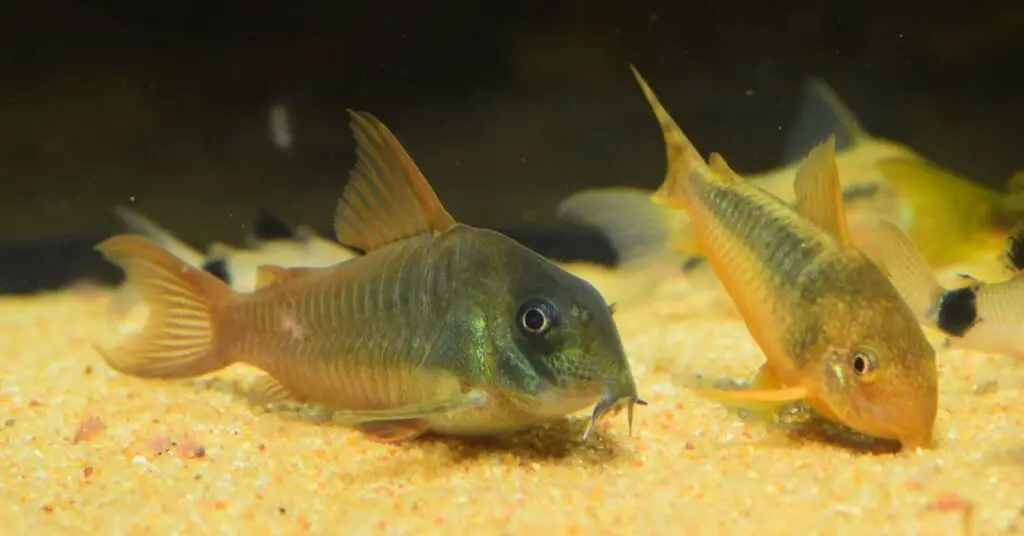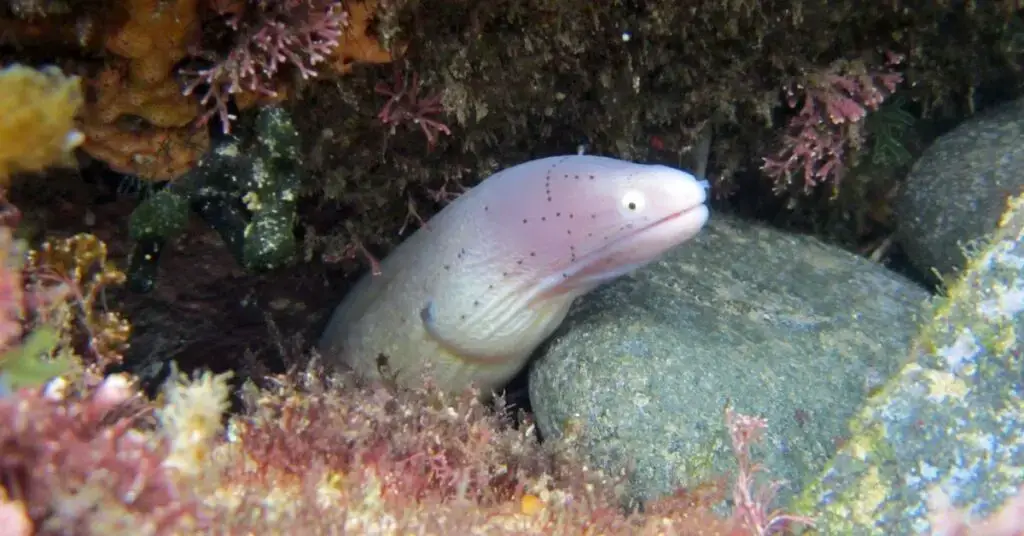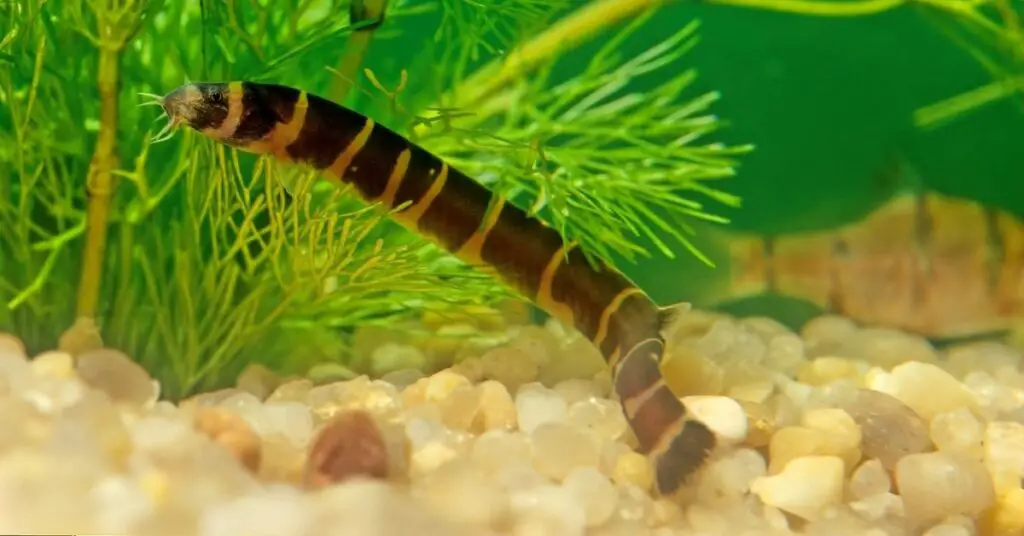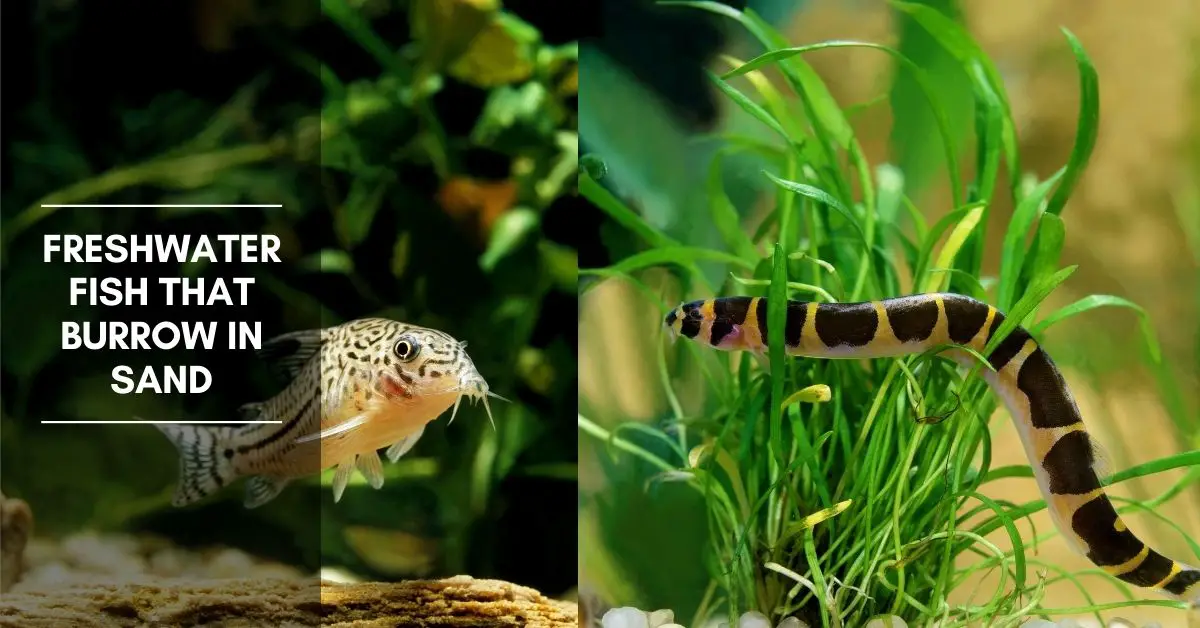Keeping freshwater aquariums is a fun and exciting way to bring a bit of the wonder of the natural world into your home. However, cleaning up after your aquatic companions and keeping your substrates clean can be tedious and takes away from the time you spend enjoying your tank. Many aquarium enthusiasts solve this problem by introducing a couple of fish that burrow in sand!
There are three highly recommendable freshwater species of fish that will burrow in aquarium sand and help cut down on cleaning time and nasty toxin buildup.
Corys, Eels, and Loaches will frequently bury themselves and even burrow tunnels through your tank’s sand.
While the list of fish species that like to burrow may seem short, there are hundreds of variegations of these fish from which to choose.
Keeping these fish species will dramatically improve the health and aesthetic of your home aquarium. It is equally important that you enjoy these sand cleaners as much as you enjoy your other fish, however.
So keep reading to learn about the most popular variations that will add a bit of interest to your tank while keeping it nice and tidy!
Corys Like To Clean The Sand

Cory fish are small, peaceful fish that prefer to dwell at the bottom of your aquarium, where they can forage and scavenge for bits of debris on or in the ground.
They really enjoy digging into the substrate, and they will use their entire body in a flailing motion to burrow in as deeply as possible.
API STRESS ZYME Freshwater and Saltwater Aquarium Cleaning Solution 16-Ounce Bottle
API ACCU-CLEAR Freshwater Aquarium Water Clarifier 4-Ounce Bottle
12% OffAPI GENERAL CURE Freshwater and Saltwater Fish Powder Medication 10-Count Box
15% OffUnlike other burrowers, Corys don’t prefer to stay under the sand for extended periods; they enjoy skimming the surface of the sand as well.
Of the freshwater fish that like to burrow, Corys are the fish that you are most likely to actually enjoy seeing regularly.
They prefer to live in small schools and are rather notorious for becoming sad and inactive if they live alone. However, they do well when kept with other peaceful fish of a similar size.
The Top 10 Popular Variations Of The Cory Species
- Emerald Cory – Corydoras splendens
- Albino Cory – Corydoras Albino aeneus
- Pepper Cory – Corydoras paleatus
- Panda Cory – Corydoras panda
- Pygmy Cory – Corydoras pygmaeus
- Bearded Cory – Scleromystax barbatus
- Bronze Cory – Corydoras aeneus
- Bandit Cory – Corydoras melini
- Julii Cory – Corydoras julii
- Three Stripe Cory – Corydoras trilineatus
Eels Are Energetic Burrowers

Eels primarily live and feed at the bottom of your aquarium and prefer sand substrate that they can move through more quickly than rock or gravel.
These fish are well-known for being rather shy and choosing to remain burrowed down in the substrate of your tank for the majority of the day. They will burrow deeper than other fish as well because they do not need as much oxygen.
Most eels will eventually greet you during meal feeding times if you keep a regular schedule that they can anticipate. Other than that, however, they are unlikely to be seen regularly.
Despite their shyness, eels are not considered a particular peaceful species. If you keep fish that are small enough to fit in your eels’ mouth, they will most likely disappear. Due to their penchant for hunting small fish, they do their best with fish larger than themselves.
The Top 10 Popular Variations Of The Eel Species
- Peacock Eels – Macrognathus siamensis
- Zig Zag Eels – Mastacembelidae armatus
- Half-Banded Spiny Eels – Macrognathus circumcinctus
- African Spiny Eels – Mastacembelus frenatus
- Pink Paddle-Tail Eels – Moringua raitaborua
- Tire Track Eels – Mastacembelus circumcinctus
- Fire Eels – Mastacembelus erythrotaenia
- Black Spotted Eels – Mastacembelus dayi
- Violet Goby (Not a true Eel) – Gobioides broussonnetii
- Freshwater Dragon Eel – Reedfish (Not a true Eel) or Erpetoichthys calabaricus
Loaches Like To Burrow Too

If you keep an aquarium, you’ve no doubt heard of loaches. They are the world’s largest known group of freshwater fishes, with more than 1200 species identified at this time. Hearing about them and seeing them are two very different things, however.
If you decide to keep loaches, you will rarely see them, if ever at all. These fish are incredibly timid, rely solely on food and other debris mixed in the substrate of your tank bottom, and nocturnal. In other words, they are the absolute perfect janitorial team for your freshwater aquarium!
Loaches like to completely bury themselves in the sand, hiding away from other fish, direct light, and other possible threats. Since they rarely leave their burrow trail for the surface, they are by far the most talented substrate cleanup team.
These fish do well when kept with other fish of any size, provided they are not an especially aggressive species of large fish. Loaches prefer to live in groups of 6 or more and will actually come out of hiding and school together occasionally if they have the numbers to feel safe and comfortable.
The Top 10 Popular Variations Of The Loach Species
- Kuhli Loach – Pangio kuhlii
- Clown Loach – Chromobotia macracanthus
- Dwarf Chain Loach – Ambastaia sidthimunki
- Green Tiger Loach – Syncrossus hymenophysa
- Polka Dot Loach – Botia Kubotai
- Golden Zebra Loach – Botia histrionica
- Blue Botia Loach – Yasuhikotakia modesta
- Panda Loach – Yaoshania achychilus
- Zebra Loach – Botia striata
- Skunk Loach – Yasuhikotakia morleti
Choosing Your Cleanup Crew
The three species of fish that we’ve discussed are excellent at burrowing, digging, and generally moving around the sand in your aquarium. Each species, however, has its pros and cons as a tank guest.
If you already have an established tank and are looking for 1-2 additions to help with cleaning sand, you should most likely stick with loaches. They won’t attack small tankmates, and they hide well from larger fish.
Corys do well in pre-established conditions, too, as long as larger fish are not particularly aggressive.
Eels require a bit more research to decide if they make good tank mates for other fish you are keeping. As a general rule, they don’t play well with smaller tankmates, though.

Hi, my name is Sean, and I’m the primary writer on the site. I’m blogging mostly about freshwater and saltwater aquariums, fish, invertebrates, and plants. I’m experienced in the fishkeeping hobby for many years. Over the years I have kept many tanks, and have recently begun getting more serious in wanting to become a professional aquarist. All my knowledge comes from experience and reading forums and a lot of informative sites. In pursuit of becoming a professional, I also want to inspire as many people as I can to pick up this hobby and keep the public interest growing.
Read more about Sean.
Please join also my Facebook group.















